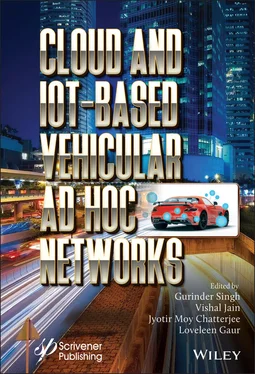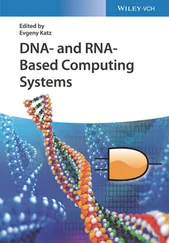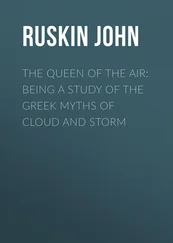8 Chapter 8Figure 8.1 VANET model.Figure 8.2 Vehicle collision scenario.Figure 8.3 Vehicle grouping.Figure 8.4 VANET security services.Figure 8.5 Vehicle group formation time.Figure 8.6 Vehicle authentication time.Figure 8.7 Vehicle collision rate.Figure 8.8 Data transmission rate.Figure 8.9 Privacy preservation level.
9 Chapter 9Figure 9.1 Traditional Network vs SDN.Figure 9.2 Evolution of services over network.Figure 9.3 DoS attack.Figure 9.4 Man-in-the-Middle attack.Figure 9.5 SDN architecture.Figure 9.6 Distributed SDN architecture.Figure 9.7 OpenFlow components.Figure 9.8 Connection establishment between OpenFlow switch and SDN controller.Figure 9.9 OpenFlow packet forwarding and processing.Figure 9.10 Comprehensive Security Architecture of SDN.Figure 9.11 Simple network topology.Figure 9.12 Pingall reachability test.Figure 9.13 Available bandwidth measurement.Figure 9.14 Packet loss and delay.Figure 9.15 Location based authentication model architecture.Figure 9.16 Location-based Registration Process.Figure 9.17 Location-based authentication and authorization process.Figure 9.18 IAM Policy Model Components.Figure 9.19 Extended TLS support.Figure 9.20 Defensive system flow.
10 Chapter 10Figure 10.1 Flowchart of EHO algorithm. Reference: link.springer.com [14].Figure 10.2 Pseudo code of clan updating operator [22].Figure 10.3 Pseudo code of separating operator [30].Figure 10.4 Pseudo code of EHO algorithm [12].
11 Chapter 11Figure 11.1 An example of the communication in VANET.Figure 11.2 Three layer communication in a VANET and clustering of sensors insid...Figure 11.3 Proposed registration process for a vehicle into an RSU.Figure 11.4 Flowchart to generate the cryptographically secured random sequences...
12 Chapter 13Figure 13.1 Route selection algorithm.Figure 13.2 Route selection and route estimation.Figure 13.3 Algorithm for congestion.Figure 13.4 Effective congestion algorithm.Figure 13.5 Simulation results.Figure 13.6 Improved simulation results.Figure 13.7 End to end delay.
13 Chapter 14Figure 14.1 CV2X functionality at the blind intersection of roads.Figure 14.2 5G CV2X communication for smart vehicle [7] [Courtesy: QUALCOMM].Figure 14.3 CV2X showing different 3GPP releases [8].Figure 14.4 Pictorial representation of vehicular safety activities.Figure 14.5 Smart Vehicle architecture using private 5G network integrated with ...Figure 14.6 Smart vehicle architecture with V2V only communication.Figure 14.7 Automotive Gateway is central for vehicular communications assisted ...Figure 14.8 Block diagram of a smart vehicle with different electronics modules.Figure 14.9 The NXP blue box ADAS architecture [Courtesy: NXP Semiconductors].Figure 14.10 The Ficosa CV2X box for vehicular communication.Figure 14.11 Adaptation of 5G three use cases in smart vehicle at ECE, SMIT. [Co...Figure 14.12 5G CV2X communication between one RSU with one smart vehicle.Figure 14.13 ‘5G IoT Roadside Unit’ Base station development at ECE, SMIT.Figure 14.14 Multi standard radio combining three different spectra of eMBB, NB ...Figure 14.15 HARQ and ARQ retransmissions on MAC and RLC Layer [Courtesy: Nation...Figure 14.16 Overview of SDR Setup with LabVIEW [Courtesy: National Instruments]...Figure 14.17 Setup for combined 5G-NR link at 28/1 GHz to facilitate reception d...Figure 14.18 Block diagram of the 28/1 GHz combined communication link to improv...Figure 14.19 Performance of the link using chirp signal transmission and recepti...Figure 14.20 5G URLLC CV2X communication between two smart vehicles.Figure 14.21 Field trial at outside floor of ECE, SMIT laboratory using two toy ...Figure 14.22 Executing time critical video synchronization using 5G link.Figure 14.23 The Final synchronized video with master slave control.
14 Chapter 15Figure 15.1 Effect of change of TP while varying the packet rate.Figure 15.2 Packet header of route request packet in (a) conventional protocol a...Figure 15.3 Flowchart of the hybrid mechanism.Figure 15.4 TP vs ST for (a) AODV and the (b) PPA-AODV protocols.Figure 15.5 Graph showing the energy levels in the intermediate nodes for Flow I...Figure 15.6 Routing paths of the non-power aware mechanism for Flow ID 1 at the ...Figure 15.7 TP vs NN for (a) AODV and (b) PPA-AODV protocols.Figure 15.8 PDR vs ST for (a) AODV and (b) PPA-AODV protocols.Figure 15.9 PDR vs NN for (a) AODV and (b) PPA-AODV protocols.Figure 15.10 Comparison of the TP of AODV, AOMDV, DSR, DSDV and DYMO protocols w...Figure 15.11 Comparison of the PDR of AODV, AOMDV, DSR, DSDV and DYMO protocols ...Figure 15.12 Comparison of EED of AODV, AOMDV, DSR, DSDV and DYMO protocols with...
15 Chapter 16Figure 16.1 Smart routing model.Figure 16.2 MOA-Fogged Routing (MFR) framework.Figure 16.3 Fog-Simulator (FRM-Framework).Figure 16.4 MOA-Simulator (Classification tool-part1).Figure 16.5 MOA-Simulator (Classification tool-part2).Figure 16.6 MOA-Simulator (Classification tool-part3).Figure 16.7 CloudSim-Simulator (virtual machine with cloudlet-part1).Figure 16.8 CloudSim-Simulator (virtual machine with cloudlet-part2).Figure 16.9 CPU-execution time for one-VM.Figure 16.10 Task’s waiting time for one-VM.Figure 16.11 CPU-execution time for two-VM.Figure 16.12 CPU-waiting time for two-VM.
16 Chapter 17Figure 17.1 Hype cycle showing emerging twelve technologies [9].Figure 17.2 Uses of UAVs in industries to various maturity levels [10].Figure 17.3 Application examples of FANETs.Figure 17.4 Components of UAV communication system [23].Figure 17.5 Types of UAV communication.Figure 17.6 Architecture of UAV-WSN [34].Figure 17.7 The FANET structure.Figure 17.8 The FANET, VANET and MANET structures.Figure 17.9 FANET used for UAV-to-UAV and UAV-to-GCS communication.
1 Chapter 1Table 1.1 Specific examination for various low force Wi-Fi modules [5].Table 1.2 Specific examination for various “IEEE 802.15.4 modules” [5].Table 1.3 Principle contrasts between conventions that might be utilized in IoT ...
2 Chapter 2Table 2.1 Characteristics of service discovery methods.Table 2.2 Comparison of routing unit and service unit.
3 Chapter 4Table 4.1 Vehicle to vehicle wireless access technologies comparison [6, 7].Table 4.2 DSRC channel designation with frequency.Table 4.3 DSRC equipment installation classes.
4 Chapter 6Table 6.1 Relative speed of the vehicle = 0.1.Table 6.2 Relative speed of the vehicle = –0.1.Table 6.3 Relative speed of the vehicle = –0.2.Table 6.4 Relative speed of the vehicle = 0.2.Table 6.5 The heart rate = 40 bpm.Table 6.6 The heart rate = 60 bpm.Table 6.7 The heart rate = 72 bpm.Table 6.8 The heart rate = 92 bpm.
5 Chapter 7Table 7.1 AQI and air pollution scale.Table 7.2 AQI and health hazards.
6 Chapter 9Table 9.1 Security attacks—motivation and contribution.Table 9.2 OpenFlow protocol messages per type.Table 9.3 Main components of flow entry in flow table.Table 9.4 TLS/SSL support by Controllers and Switches from different Vendors.Table 9.5 Simple risk categories.Table 9.6 Summary of Security Comparisons at SDN.Table 9.7 Experimental setting.
7 Chapter 10Table 10.1 Benchmark function.Table 10.2 Mean function values obtained by four methods.Table 10.3 Best function obtained by four methods.
8 Chapter 13Table 13.1 Comparison of ML techniques.Table 13.2 Results of machine learning techniques.
9 Chapter 14Table 14.1 Functions being realized at ECE, SMIT.Table 14.2 Specification of NI SDR USRP 2974.Table 14.3 System comparison.
10 Chapter 15Table 15.1 Flows and their power requirements.Table 15.2 EED for all the flows in AODV and PPA-AODV protocols.Table 15.3 TP comparison of the proposed hybrid protocols with the regular AODV,...Table 15.4 PDR comparison of the proposed hybrid protocols with the regular AODV...Table 15.5 EED comparison of the proposed hybrid protocols with the regular AODV...Table 15.6 TP, PDR and EED with and without the PAM for Flow ID 1 for AODV, AOMD...Table 15.7 TP, PDR and EED with and without the power aware mechanism for Flow I...Table 15.8 TP, PDR and EED with and without the hybrid mechanism for Flow ID 1 f...Table 15.9 Comparison of TP, PDR and EED for AODV, PA-AODV, P-AODV and PPA-AODV ...
Читать дальше
